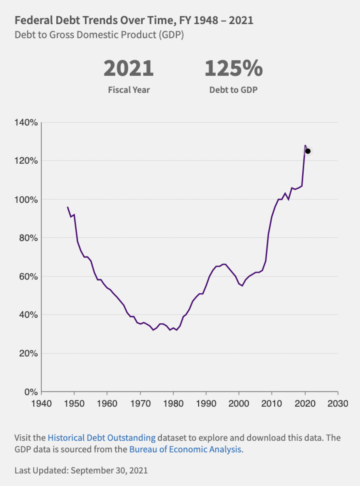Michael Haney, head of product strategy at Galileo Financial Technologies, said machine learning combined with the rise of generative artificial intelligence will usher in a new era of back-office productivity and ultimately transform how financial services organizations use data to deliver hyper-personalized experiences.
The conversation between Haney and PYMNTS is part of the “What’s Next in Payments: Payments and GenAI” series.
We’re still in an era where financial services organizations are adopting machine learning (a subset of AI), he said. But increasingly, organizations are turning toward generative AI and machine learning to “supercharge” their back-end operations to enhance productivity, efficiency and quality.
While machine learning sometimes requires manual intervention as users tweak the models themselves and examine which ones are performing best, the models gain the ability to learn and adapt faster as conditions change, Haney explained.
Within this area of machine learning exist techniques called neural networks. Neural networks are an “attempt to mimic how the human brain works, and they often have multiple layers,” Haney said. The more layers used, the more capacity, efficiency, performance and accuracy can be improved.
Advancements in generative AI have developed the potential of machine learning beyond the “rigid and inflexible rules engines” of the past that were limited to specific types of content. Modern methods rely on transformers, or deep learning models, that can predict the next word in a sentence, or what picture, video or music to offer, Haney said.
“It creates a human-like response at levels we’ve never seen before,” he said.
Visualizing the Data
Turning the focus to payments, Haney said AI can transform financial services across several workflows and interactions, among them client servicing — enhancing and improving the productivity of operations. As financial institutions and payment processors look to use that data in unique ways, consumer opt-in of data sharing will be critical, he said.
“Operational teams love data, reports, dashboards and things of that nature,” Haney said. “They are starting to get the ability to do data visualization through natural language queries.”
These natural language queries can deliver valuable insights, such as intel into how payments volumes are changing every day. Other generative AI-powered technologies, such as virtual assistants, provide value for both customers and bank staff. For instance, instead of having to peruse manuals that are hundreds of pages thick, staffers can simply type a question into their AI-powered applications to find the best way to improve response times and otherwise serve customers. Fraud defenses are another use case bolstered through automated analytics.
Generative AI can also improve loan decisioning and other interactions, supporting loan lifecycle management from the applications to credit collections, he said. In more commercial settings, AI is already helping treasury managers within the various banks examine cash flow and interest rate changes and navigate liquidity risk.
Hyper-personalization will be a natural by-product of AI, Haney said, although he cautioned that models must be examined to safeguard against bias. He added that consumers have traditionally had to manually navigate through a plethora of payment options, spanning everything from ACH to wires and most recently, real-time options. Having an “engine” to help quickly guide them through the options can prove valuable.
“Consumers are often completely overwhelmed with the number of different ways to move money,” he said. “They need these engines to guide them through that trade-off of speed, price and risk, and to recommend the best type of payment rails that they should consider based on the transaction they are trying to do.”
Similarly, there’s also the potential to use structured and unstructured data and real-time context to create and disseminate the next best offers at the point of sale. New use cases are also evolving across many aspects of financial services, including client service operations, marketing operations and product development.
The way technology is evolving opens new possibilities.
“One of the things we are going to start to see is new, verticalized and specialized large language models,” Haney said, adding that more decisioning use cases will be hallmarks of the months and years ahead.
“A lot of new and interesting stuff is going to happen this year beyond just the models themselves,” he predicted.
Link: https://www.pymnts.com/news/artificial-intelligence/2024/how-generative-ai-is-transforming-financial-services-through-hyper-personalization/
Source: https://www.pymnts.com
- SEO Powered Content & PR Distribution. Get Amplified Today.
- PlatoData.Network Vertical Generative Ai. Empower Yourself. Access Here.
- PlatoAiStream. Web3 Intelligence. Knowledge Amplified. Access Here.
- PlatoESG. Carbon, CleanTech, Energy, Environment, Solar, Waste Management. Access Here.
- PlatoHealth. Biotech and Clinical Trials Intelligence. Access Here.
- Source: https://www.fintechnews.org/how-genai-is-transforming-financial-services-through-hyper-personalization/
- :is
- :where
- 430
- a
- ability
- accuracy
- ach
- across
- adapt
- added
- adding
- Adopting
- against
- ahead
- AI
- AI-powered
- already
- also
- Although
- among
- an
- analytics
- and
- Another
- applications
- ARE
- AREA
- artificial
- artificial intelligence
- AS
- aspects
- assistants
- At
- Automated
- Back-end
- Bank
- Banks
- based
- BE
- before
- BEST
- between
- Beyond
- bias
- bolstered
- both
- Brain
- but
- called
- CAN
- Capacity
- case
- cases
- Cash
- cash flow
- change
- Changes
- changing
- client
- collections
- combined
- commercial
- completely
- conditions
- Consider
- consumer
- Consumers
- content
- context
- Conversation
- create
- creates
- credit
- critical
- Customers
- dashboards
- data
- data sharing
- data visualization
- day
- deep
- deep learning
- defenses
- deliver
- developed
- Development
- different
- do
- efficiency
- Engines
- enhance
- enhancing
- Era
- Every
- every day
- everything
- evolving
- examine
- exist
- Experiences
- explained
- faster
- financial
- Financial institutions
- financial services
- Find
- flow
- Focus
- For
- fraud
- from
- Gain
- genai
- generative
- Generative AI
- get
- going
- guide
- had
- hallmarks
- happen
- Have
- having
- he
- head
- help
- helping
- How
- HTTPS
- human
- Hundreds
- improve
- improved
- improving
- in
- Including
- increasingly
- insights
- instance
- instead
- institutions
- Intel
- Intelligence
- interactions
- interest
- INTEREST RATE
- interesting
- intervention
- into
- jpg
- just
- language
- large
- layers
- LEARN
- learning
- levels
- lifecycle
- Limited
- Liquidity
- loan
- Look
- Lot
- love
- machine
- machine learning
- management
- Managers
- manual
- manually
- many
- Marketing
- max-width
- methods
- models
- Modern
- money
- months
- more
- most
- move
- multiple
- Music
- must
- Natural
- Natural Language
- Nature
- Navigate
- Need
- networks
- Neural
- neural networks
- never
- New
- next
- number
- of
- offer
- Offers
- often
- on
- ones
- opens
- Operations
- Options
- or
- organizations
- Other
- otherwise
- overwhelmed
- pages
- part
- past
- payment
- payments
- performance
- performing
- picture
- plato
- Plato Data Intelligence
- PlatoData
- plethora
- Point
- point of sale
- possibilities
- potential
- predict
- predicted
- price
- processors
- Product
- product development
- productivity
- Prove
- provide
- Pymnts
- quality
- queries
- question
- quickly
- rails
- Rate
- real-time
- recently
- recommend
- rely
- Reports
- requires
- response
- Rise
- Risk
- rules
- Said
- sale
- see
- seen
- sentence
- Series
- serve
- service
- Services
- servicing
- settings
- several
- sharing
- should
- simply
- sometimes
- spanning
- specialized
- specific
- speed
- Staff
- start
- Starting
- Still
- Strategy
- structured
- structured and unstructured data
- stuff
- such
- Supporting
- teams
- techniques
- Technologies
- Technology
- that
- The
- their
- Them
- themselves
- These
- they
- things
- this
- this year
- Through
- times
- to
- toward
- traditionally
- transaction
- Transform
- transformers
- transforming
- treasury
- true
- trying
- Turning
- tweak
- type
- types
- Ultimately
- unique
- unstructured
- use
- use case
- used
- users
- usher
- Valuable
- value
- various
- Video
- Virtual
- visualization
- volumes
- Way..
- ways
- we
- were
- What
- which
- will
- with
- within
- Word
- workflows
- works
- year
- years
- zephyrnet














